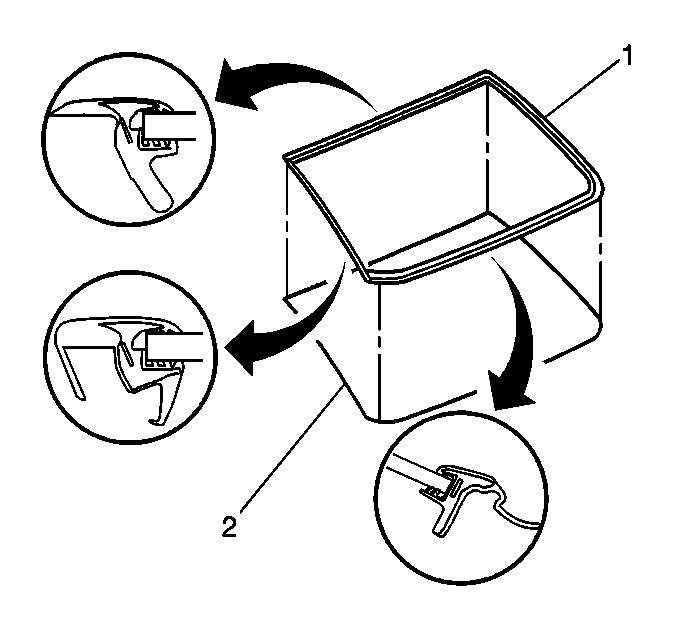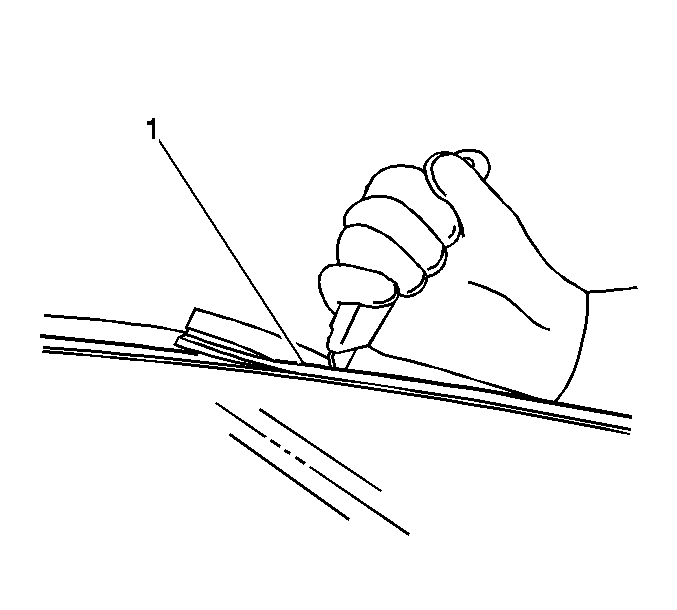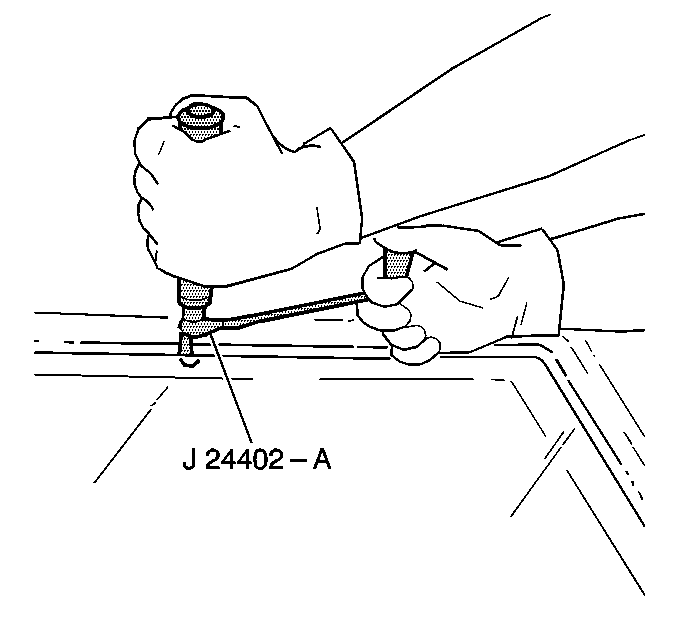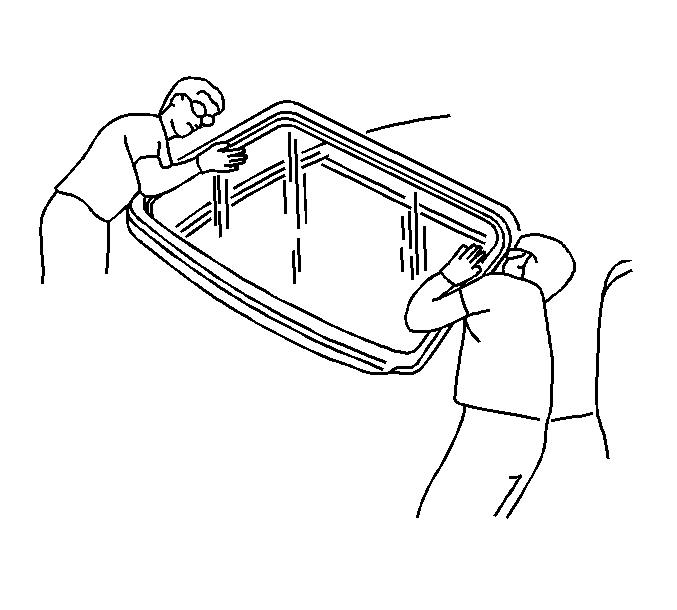Caution: If a window is cracked but still intact, crisscross the window with
masking tape in order to reduce the risk of damage or personal injury.
Important: Before cutting out a stationary window, apply a double layer of masking
tape around the perimeter of the painted surfaces and the interior trim.
- Open the rear compartment lid in order to access the reveal molding.

Caution: When working with any type of glass or sheet metal with exposed or rough
edges, wear approved safety glasses and gloves in order to reduce
the chance of personal injury.
Important: Removal of the rear window requires the replacement of the rear window
reveal molding (1).
- Remove the rear window reveal molding (1).
- Remove the upper interior quarter trim. Refer to
Rear Quarter Upper Trim Panel Replacement
in Interior Trim.
- Disconnect the rear window defogger connectors.
- Remove the OnStar® antenna. Refer to
Mobile Telephone Antenna Inner Coupling Replacement
and
Mobile Telephone Antenna Outer Coupling Replacement
in Cellular Communication.
- Disconnect the antenna connection from the rear window.
Caution: If broken glass falls into the defroster outlets, it can be blown into
the passenger compartment and cause personal injury.
- Cover to protect the following parts from broken glass:
| • | Defroster outlets and A/C outlets |

- Remove the rear window
reveal molding.
| 8.1. | Grasp the lower corner of the rear window reveal molding by hand
and slowly pull the reveal molding away from the rear window. |
| 8.2. | If the rear window reveal molding (1) will
not release, use a utility knife in order to cut around the rear window
in order to remove the rear window reveal molding. |

Important: Keep the cutting edge of the tool against the window.
- This will allow the urethane adhesive to be separated from the window.
| • | Leave a base of urethane on the pinchweld flange. |
| • | The only suitable lubrication is clear water. |

- With the aid of an assistant,
use the suction cups in order to lift the rear window from the opening.




